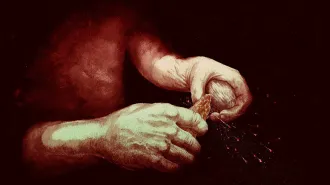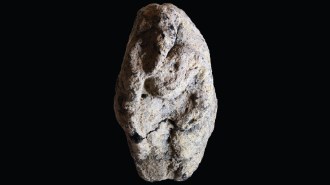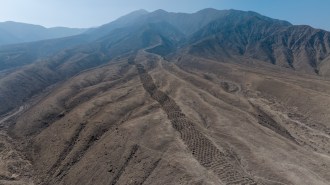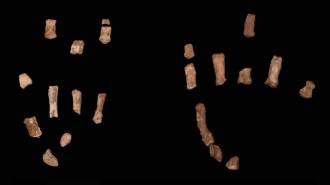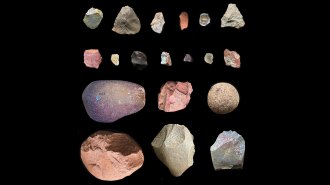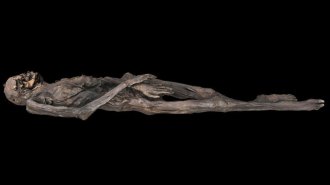These knotted cords may hide the first evidence that the Incas collected taxes
Stringed devices called khipus are undergoing more research scrutiny, but most remain enigmatic
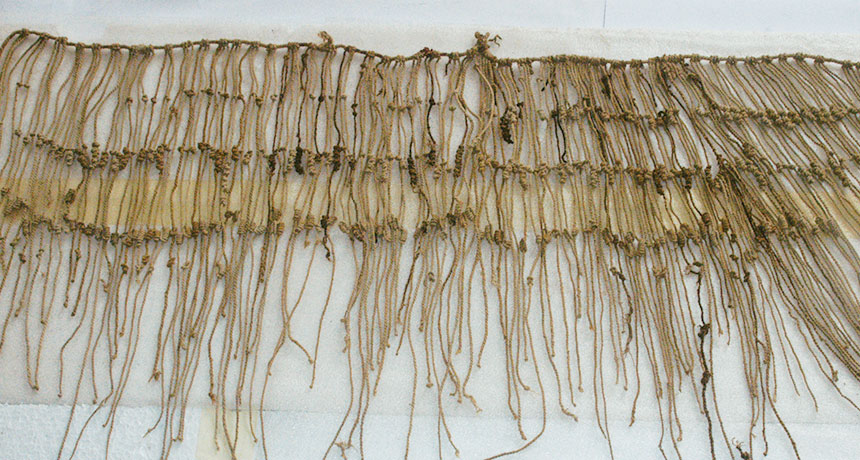
PAY UP A pair of stringed devices called khipus, unearthed at an Inca site in a basket covered with chili peppers, used knots to record taxes on stored quantities of those vegetables, researchers say.
G. Urton
While excavating an Inca outpost on Peru’s southern coast, archaeologist Alejandro Chu and his colleagues uncovered some twisted surprises.
In 2013, the scientists were digging in one of four rooms lining the entrance to what had been a massive storage structure, and they started finding sets of colored and knotted strings poking through the ground. Known as khipus, these odd Inca creations recorded census totals, astronomical events and other matters of state interest. In a society without a writing system, khipus also told stories about Inca rulers’ exploits.
That, at least, is what Spanish chroniclers wrote about khipus in the decades after toppling the Inca empire in 1532. But Spanish accounts, which were based on interviews with royal Inca record keepers, provide only general descriptions of these cord contraptions. Researchers have yet to decipher khipus from various parts of the Inca empire, and it’s a mystery what any particular cord array meant to its makers.
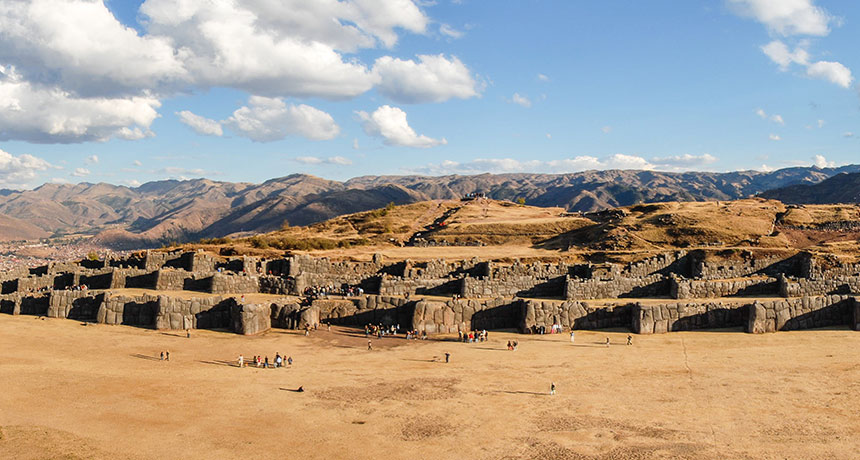
So just finding khipus at the Inkawasi site, an imposing military and administrative site unlike any other known from the Inca world, was a big deal. Inkawasi’s khipus were also unlike any found before, and in a weird way. Most were found covered by the remains of regional crops, mainly peanuts or chili peppers.
In two years of work at the storage facility, called Qolqawasi, Chu’s team found 29 khipus in three rooms and a central corridor at the front of the structure. Excavations revealed that nearly all the finds lay underneath scattered edibles.
But Chu, of the Universidad Nacional Mayor de San Marcos in Lima, Peru, couldn’t explain what he had uncovered. So when Harvard University archaeologist and khipu researcher Gary Urton heard about Chu’s puzzling discoveries through a mutual friend, he headed to Peru for an in-person look. “I had never seen produce placed on khipus,” Urton recalls of his 2014 visit to Inkawasi. “I didn’t know what to do with that at first.”
Urton and Chu now think that they have untangled the meaning of Inkawasi’s crop-topped cords. These khipus recorded a fixed amount, or tax, deducted from food that surrounding communities deposited at the state-run storage center, the researchers report in the March Latin American Antiquity. This is the first evidence, the duo says, that the Inca devised a way to tax goods.
But Urton and Chu’s conclusion, while exciting, is only one small piece of a much larger puzzle. Approximately 1,000 previously discovered khipus exist, held in museums and private collections around the world. While those tens of thousands of knots are receiving increasing research scrutiny, most khipus remain frustratingly mysterious. To enable large-scale research, Urton and his colleagues have assembled detailed information about these khipus into a digital database, which investigators from Lima to London can consult in efforts to untangle the code — or codes — of the Incas’ cords.
Knotty taxes
Research on how numbers were recorded on khipus goes back nearly a century. A series of thin, twisted cords arranged in tiers typically hang from one or more thick, horizontal cords. Knots in the bottom tier record 1s, knots in the next highest level record 10s and successively higher levels record greater powers of 10 (100s, 1,000s and so on).
Inkawasi khipus express a code of their own, unlike anything seen on knotted textiles from other Inca sites, Urton and Chu conclude. Storehouse cords excavated by Chu’s team contain what amount to simple numerical equations, represented as a = b + c, with any of four fixed values assigned to b.
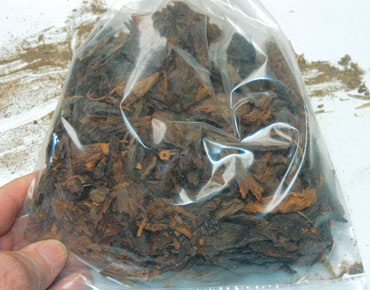
Knotted string values signified units of produce, not individual chili peppers or peanuts, Urton and Chu argue. Several rectangular, roughly 30-meter-long Qolqawasi rooms served as receiving areas for crops to be stored, the team suspects. Ropes were used to impress a grid of squares on the mud floors of these rooms, and an estimated 3,510 squares covered each room’s floor. Incoming produce was spread as evenly as possible across these surfaces, and each square counted as one unit, the researchers say.
Their analysis of 100 presumed chili pepper and peanut deposits recorded on four Inkawasi khipus found that fixed values on three of the finds equaled about 2 percent of an average deposit’s size in units. One chili pepper khipu contained a fixed value equal to about 11 percent of an average deposit.
“These khipus contain all the earmarks of the first known Inca taxation system,” Urton says.
Only a decade or two before Spaniards arrived, Inkawasi’s size and complexity may have prompted knot readers to invent a way to deduct set amounts of state-owned produce being stored there as a kind of maintenance fee. Workers at the site needed to eat, and would have left for their family farms if not supplied with crop levies, Urton says.
It’s not clear why fixed values of chili peppers were lower than those for peanuts, he says. If Inkawasi officials valued chili peppers more than peanuts, then fewer units of chili peppers may have met their taxation demands. Reasons for two chili pepper values and two peanut values are also unknown. Inkawasi bigwigs may have deemed some chili peppers especially tasty, for instance, because they were grown on superior farmland.
Scientists have long thought that Inca rulers required their subjects to farm lands run by the state on a rotating basis. But unlike other early civilizations, such as those in Mesopotamia and Egypt, the Inca were not thought to have taxed household goods and produce. Until now, no evidence of taxation in the ancient South American empire had come to light.
True to form as an outlier society with no writing, wheeled vehicles or public markets, the Inca state taxed itself at Inkawasi, not farmers’ households, Urton concludes. Had the Spanish not invaded, Inkawasi’s taxation innovation might eventually have inspired levies imposed on all subjects of the empire, a practice typical of other early state societies.
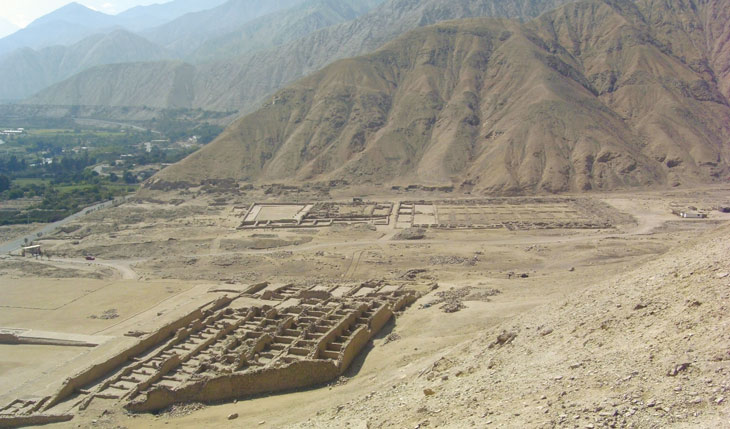
Seed aside
Inkawasi’s knotted cords might indeed cite taxed portions of stored produce that were doled out to site workers, says social anthropologist and khipu researcher Sabine Hyland. But another equally plausible explanation exists for these khipus, she says.
Storehouse khipus could have referred to crop amounts set aside as seeds for the next year’s planting. In the 1600s, Spanish hacienda owners based near the former Inca capital of Cuzco, Peru, withdrew relatively fixed amounts from their annual maize harvests for seed. Ledgers of one hacienda owner show that he extracted between 40 and 42 llama loads of maize from harvest totals every year from 1604 to 1613, says Hyland, of the University of St. Andrews in Fife, Scotland. Fixed values on Inkawasi knotted cords may have reflected much the same practice, she suggests.
Urton and Chu emphasize that fixed numbers in Inkawasi calculations always stayed the same rather than varying slightly from one year to the next, as might be expected if they represented seeds to set aside. An Inca concern with taxing stable proportions of stored crops seems most likely, they say.
Whether documenting taxation or seed collection, Inkawasi’s khipus are notable for having been found where they were used, Hyland says.
“This is the first time that we have such informative khipus from the Inca period that were actually placed [with] the items that they record,” she says.
Constant motion
If the Inkawasi knot patterns show that taxes were as inevitable as death at Inkawasi, that still leaves a load of unexplained information on other types of khipus, such as those included in the Harvard database.
Consider other knotted cords discovered at Inkawasi in 2016 that include entwined strings dyed in pairs of either light or dark colors. These colored cords may represent Inca record keepers’ credit and debit calculations for communities that stored produce at Inkawasi’s facilities, says archaeologist Jon Clindaniel, a recent graduate student of Urton’s now at the University of Chicago.
Light-colored cords denoted addition, Clindaniel suspects, while dark-colored cords stood for subtraction. Knotted devices with both cord colors could represent a math operation such as “+ 90, – 15 = 75.” Inkawasi accountants could have used such a system to record credits and debits, simultaneously tracking what communities in the Inca orbit had paid in crop taxes and what was still owed. That practice has yet to be confirmed, though.
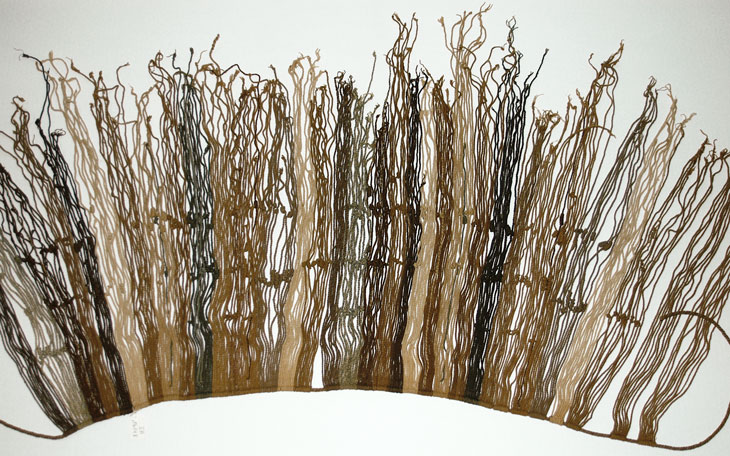
Not just mathematical devices, khipus may also record stories about Inca rulers on knotted and dyed cords, researchers speculate. Both Hyland and Urton are trying to figure out how to read what appear to be stories or historical accounts on khipus fashioned by Inca people after Spanish conquest (SN Online: 5/8/17).
Still, even deciphering, say, a pre-conquest khipu’s tale of an Inca king’s exploits might leave scientists confused. There is no reason to expect that the Inca regarded history as a linear series of events, with certain actions having specific consequences, Urton says.
A peculiarity of the night skies might have inspired an unusual Inca world view, he suggests. As the only ancient civilization located below the equator, in the Southern Hemisphere, the Inca neither saw nor probably imagined the existence of a North Star forever stuck in the same heavenly spot. Perhaps members of an ancient society untethered to a secure cosmic landmark thought in ways that people today can’t begin to grasp, Urton speculates. “Every point in the Inca universe was in motion.”
But even the Inca, it seems, couldn’t move fast enough to dodge taxes.
